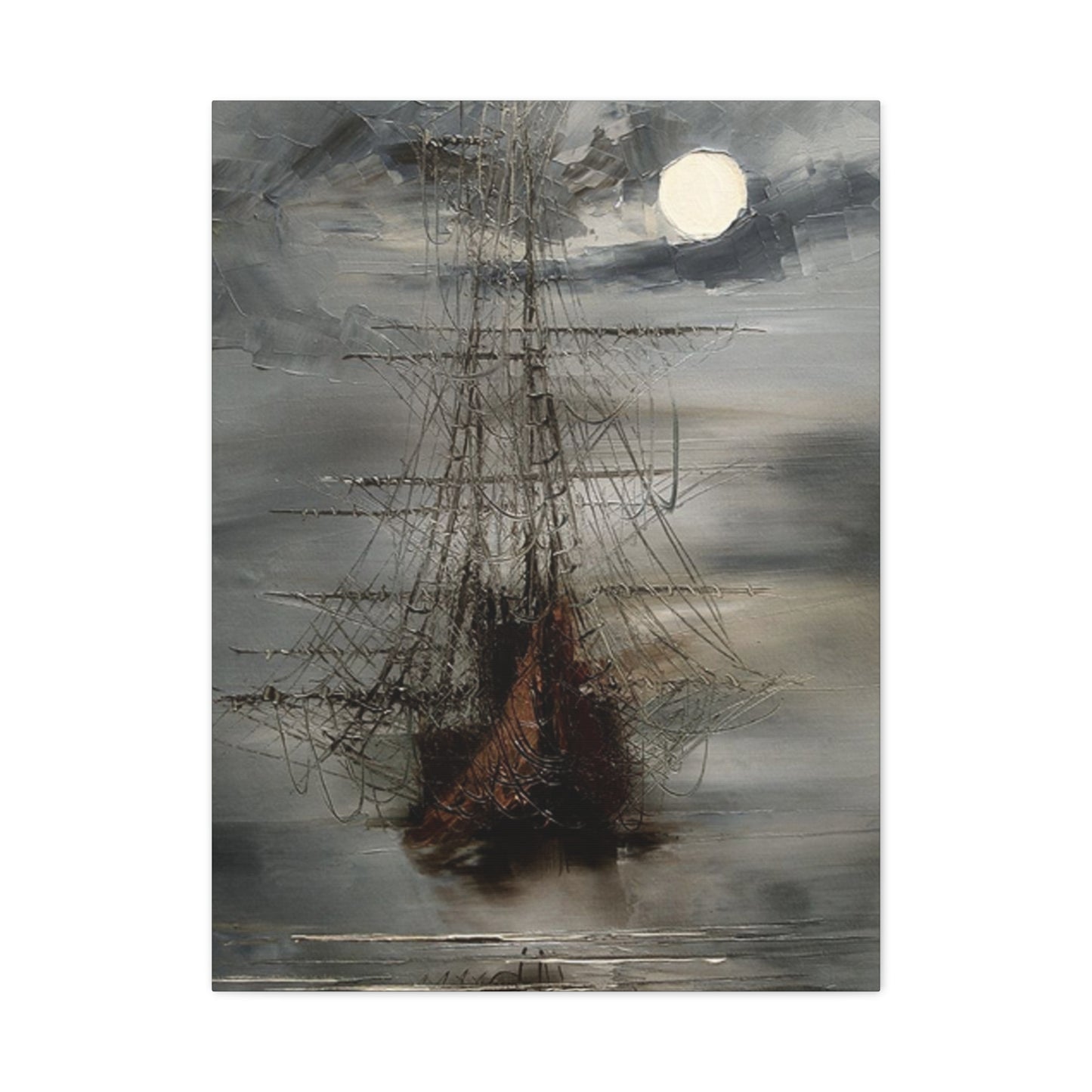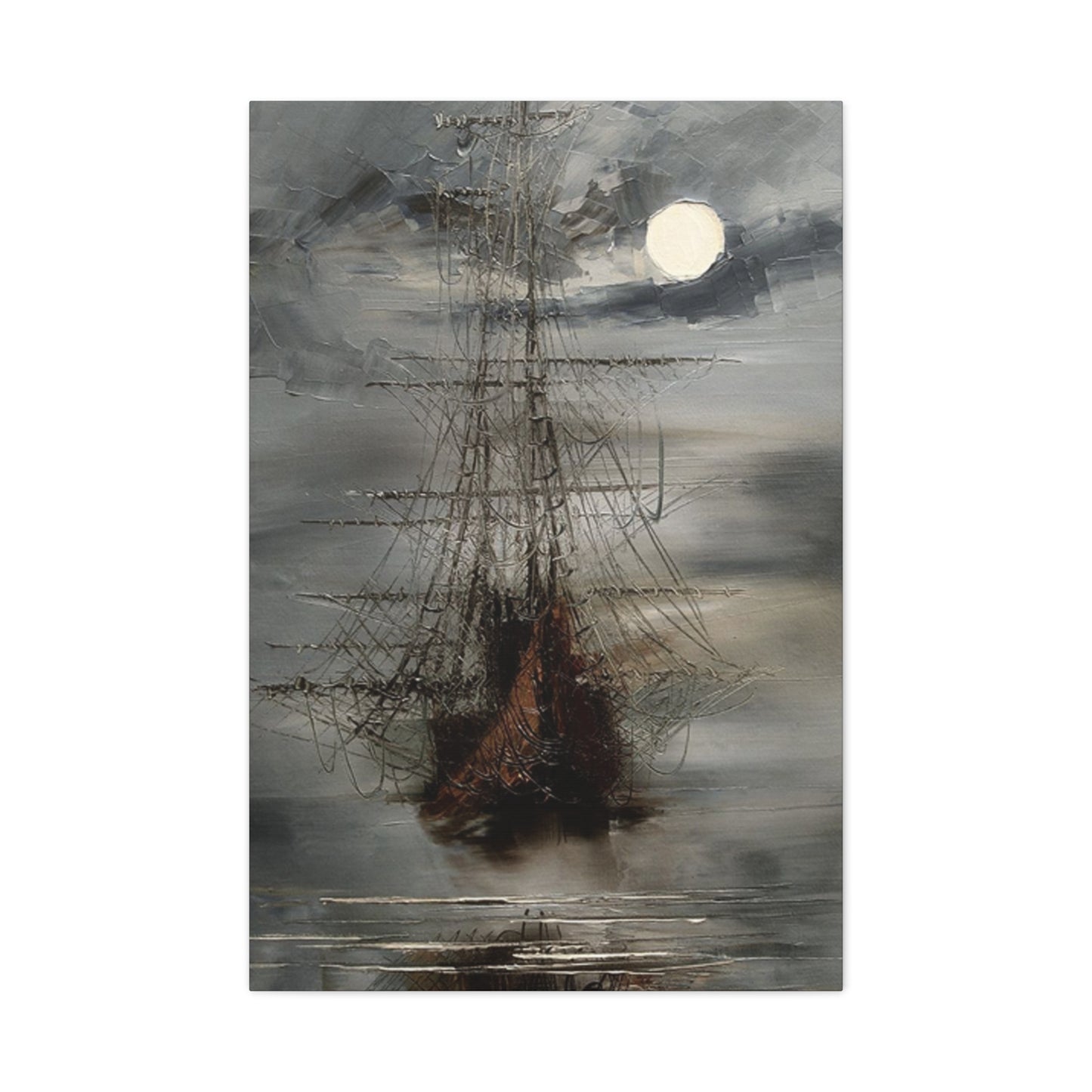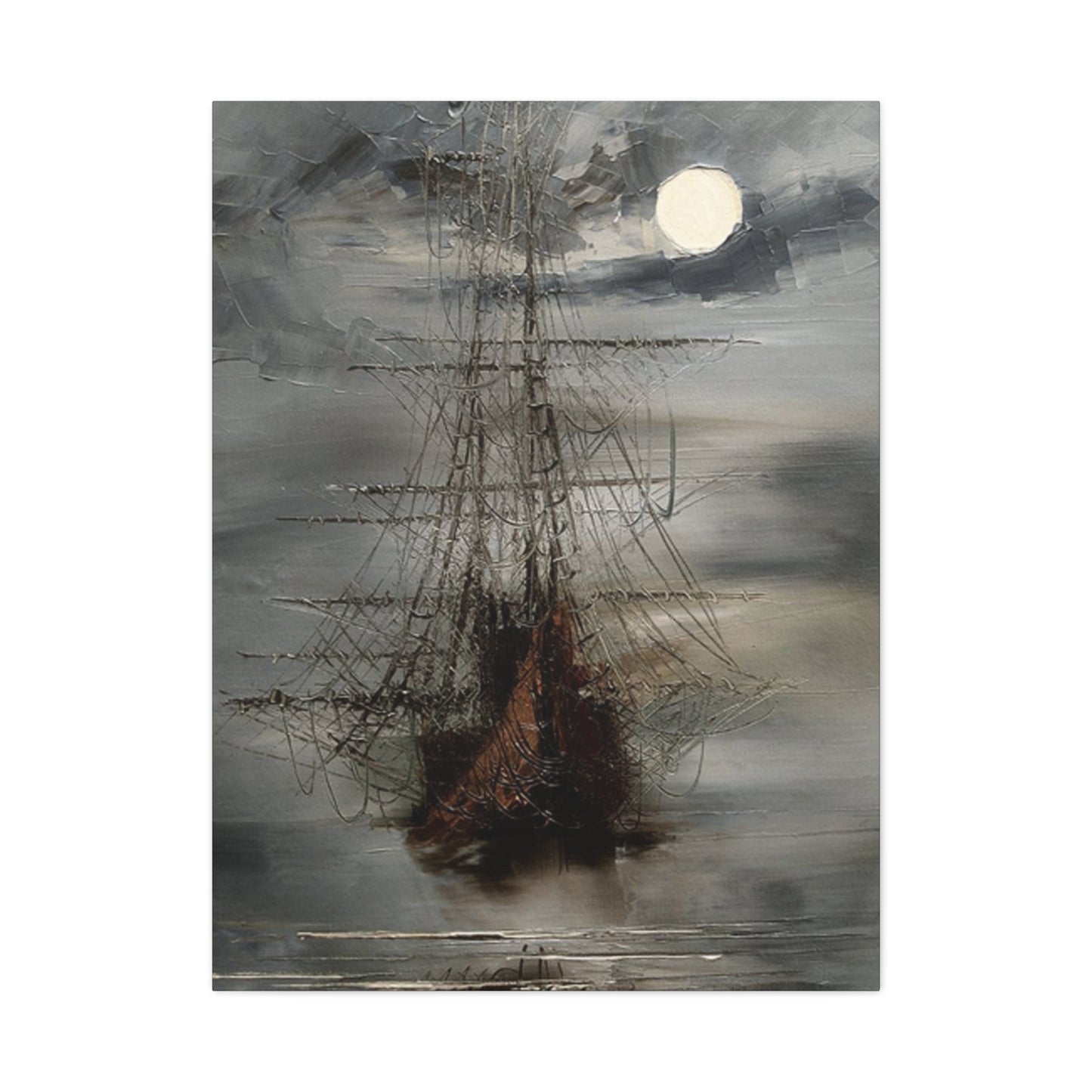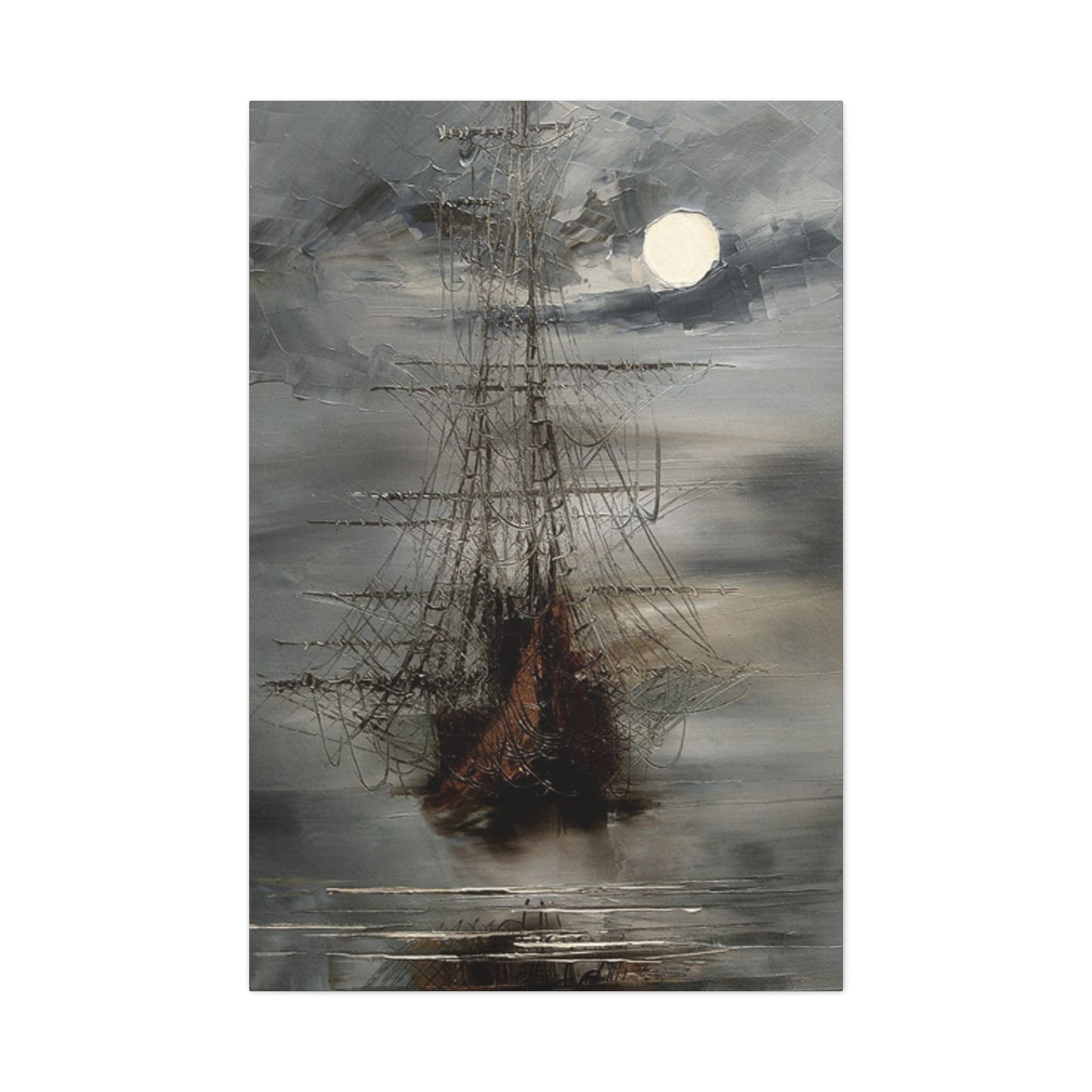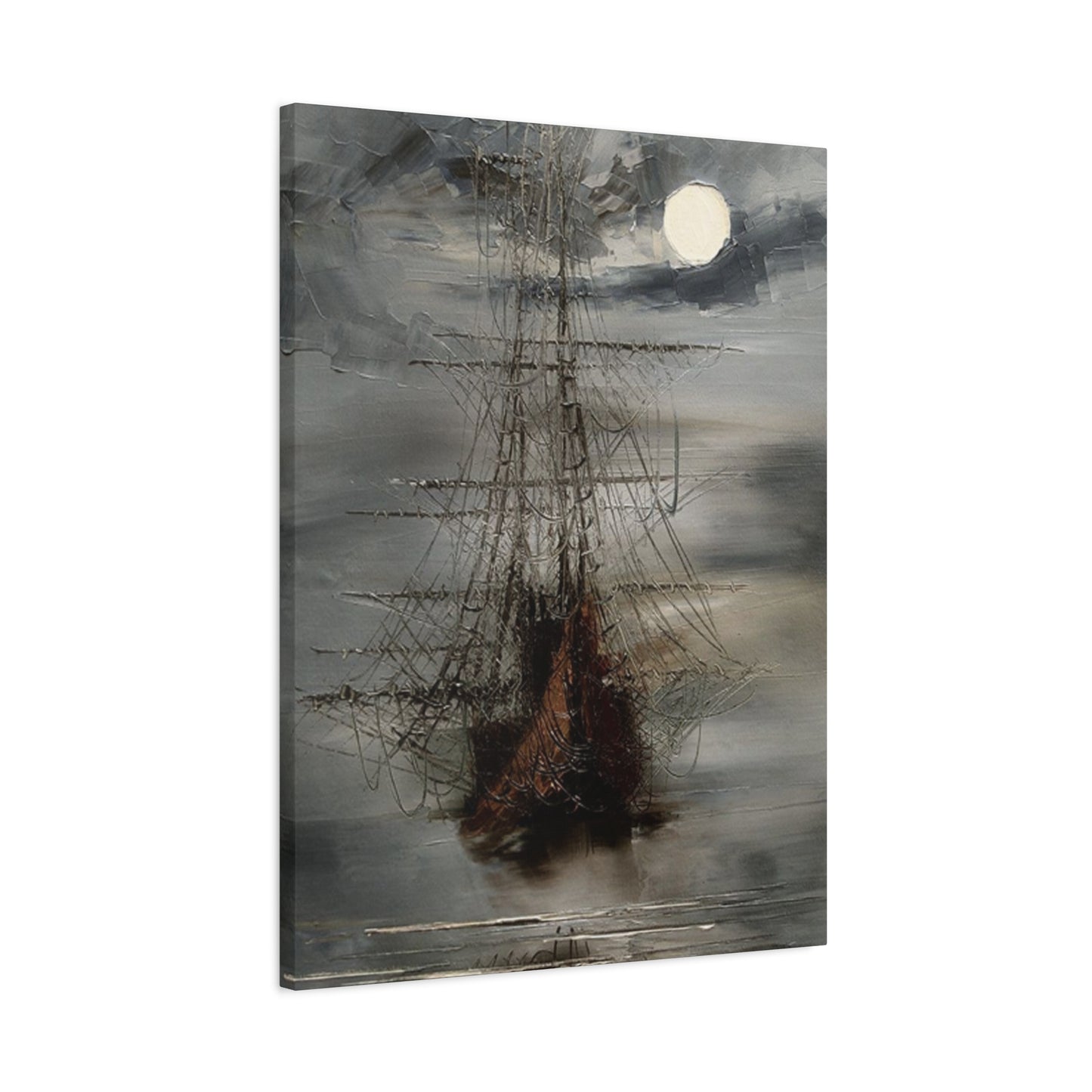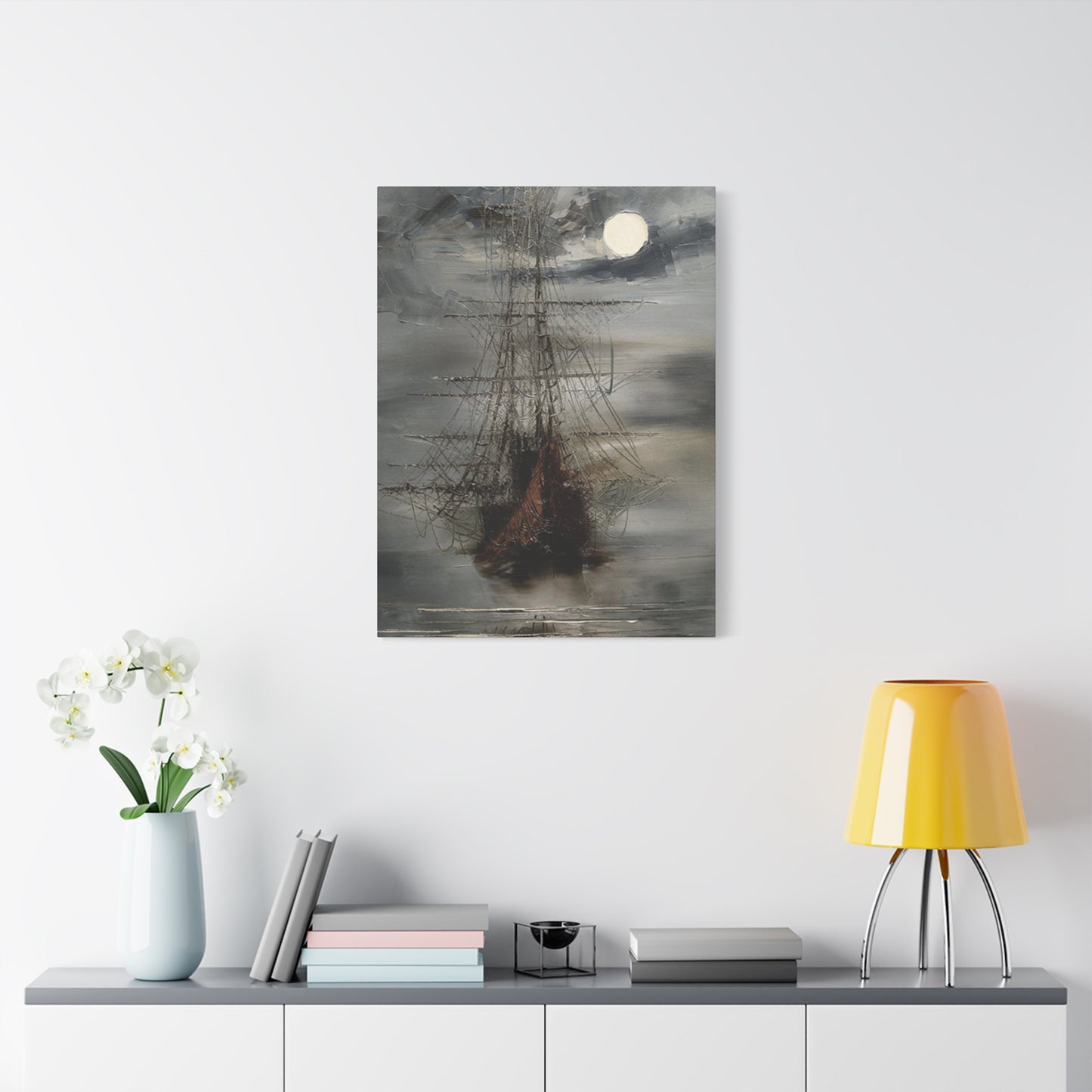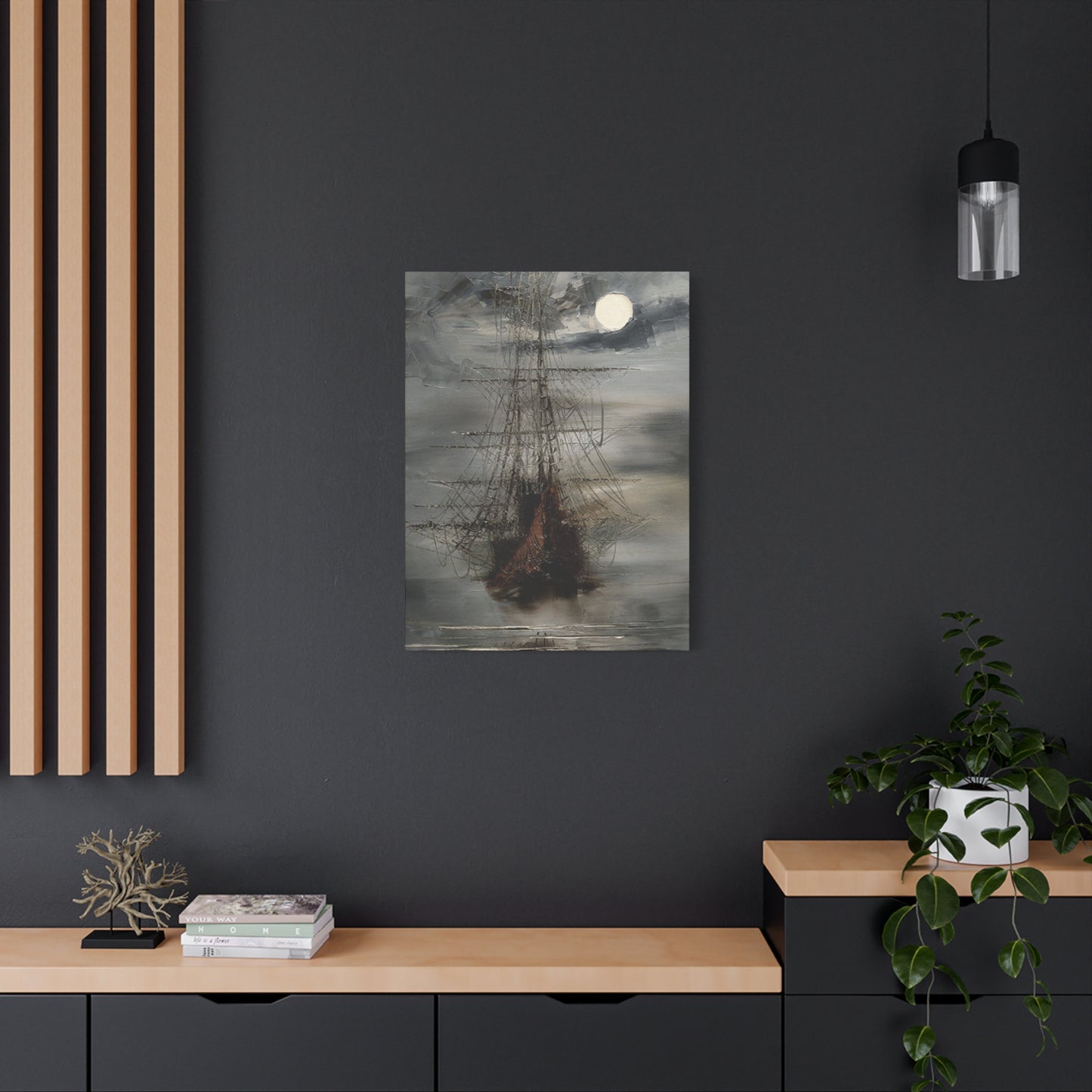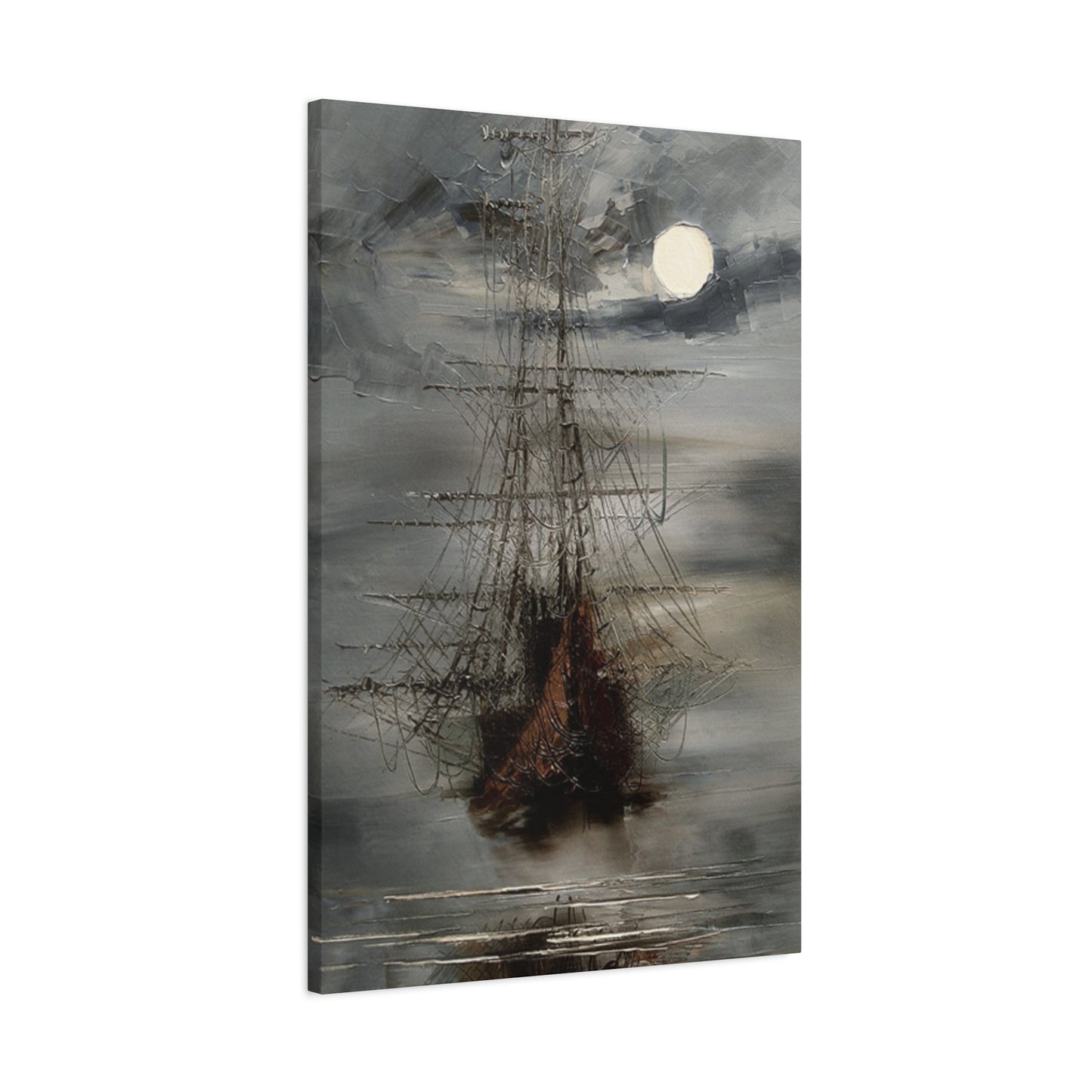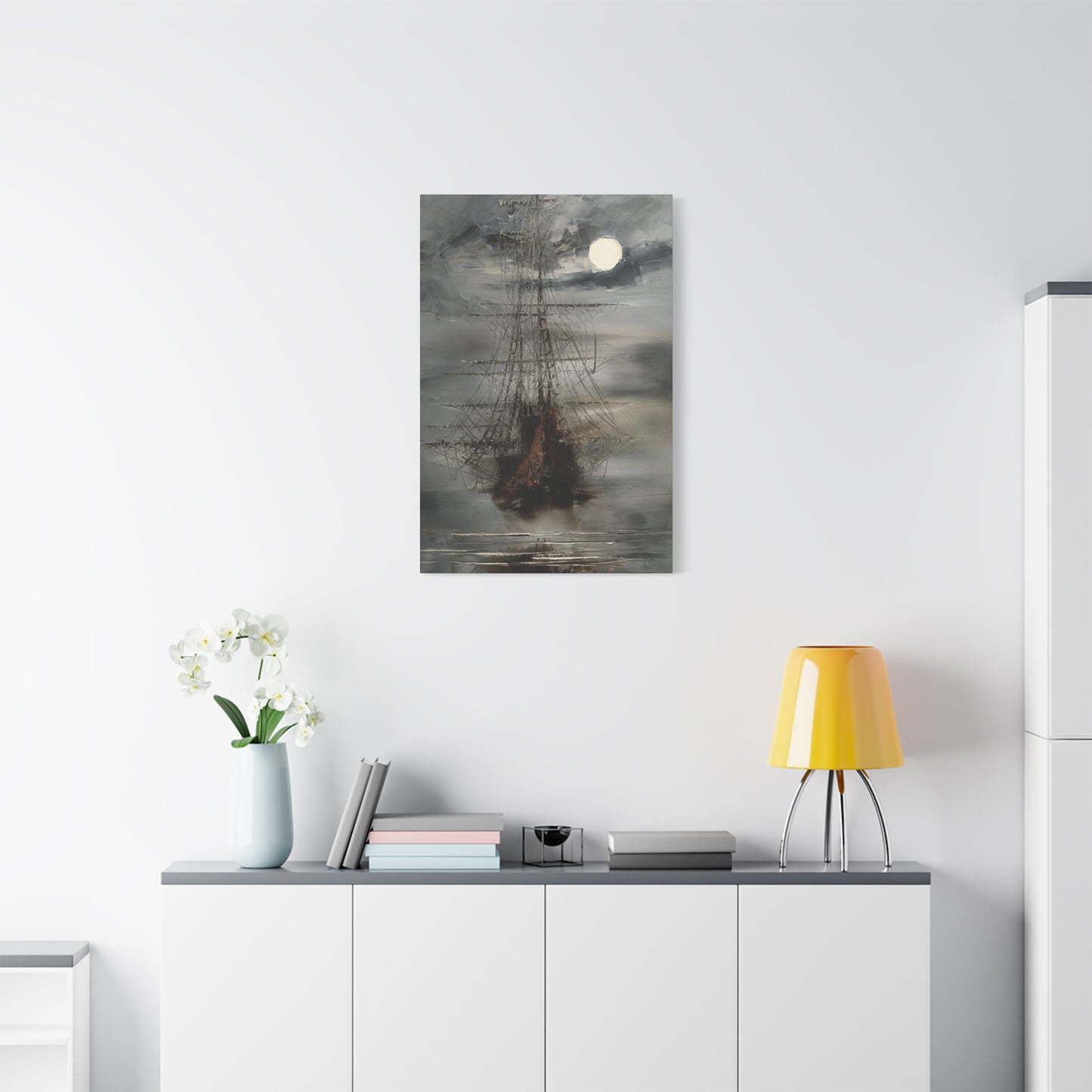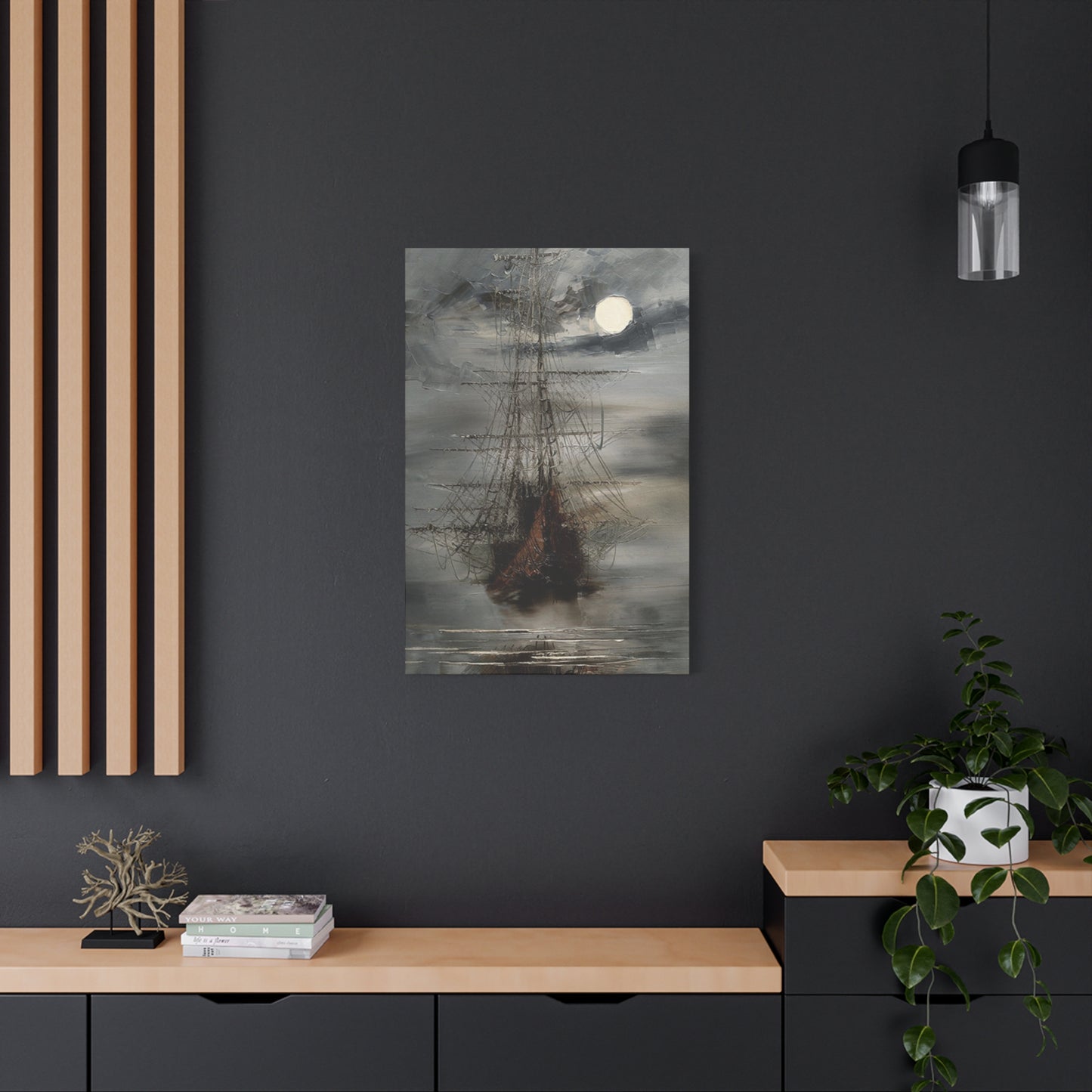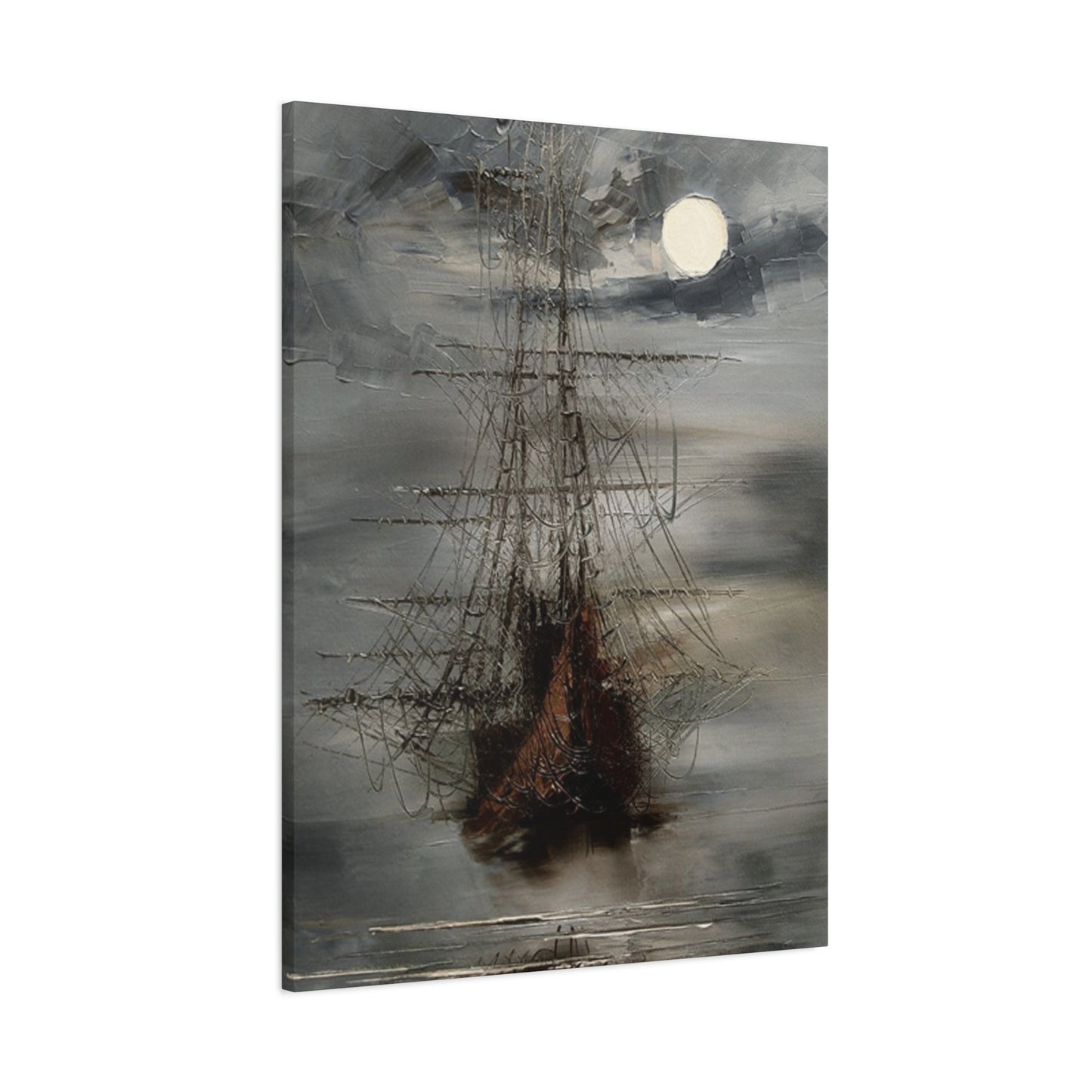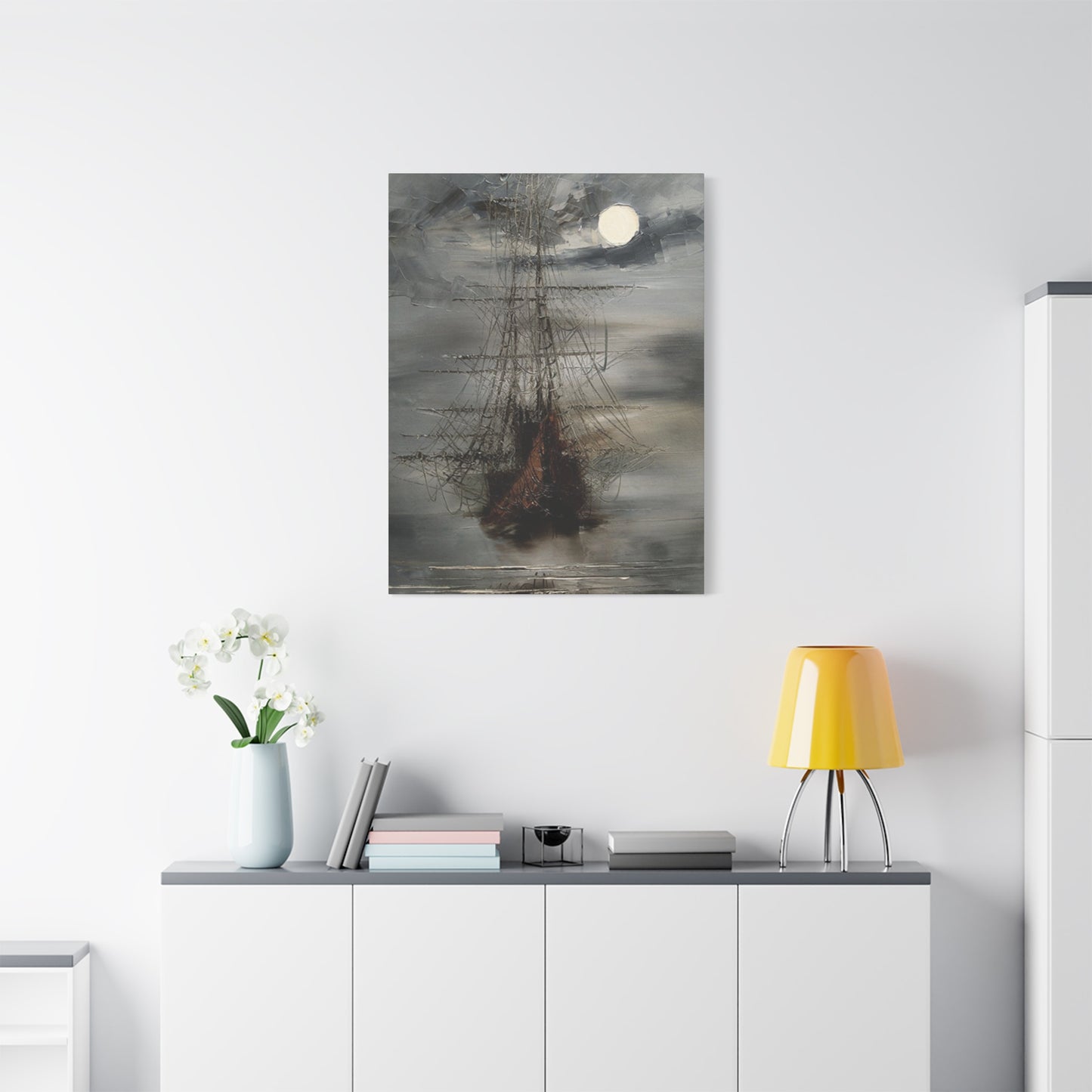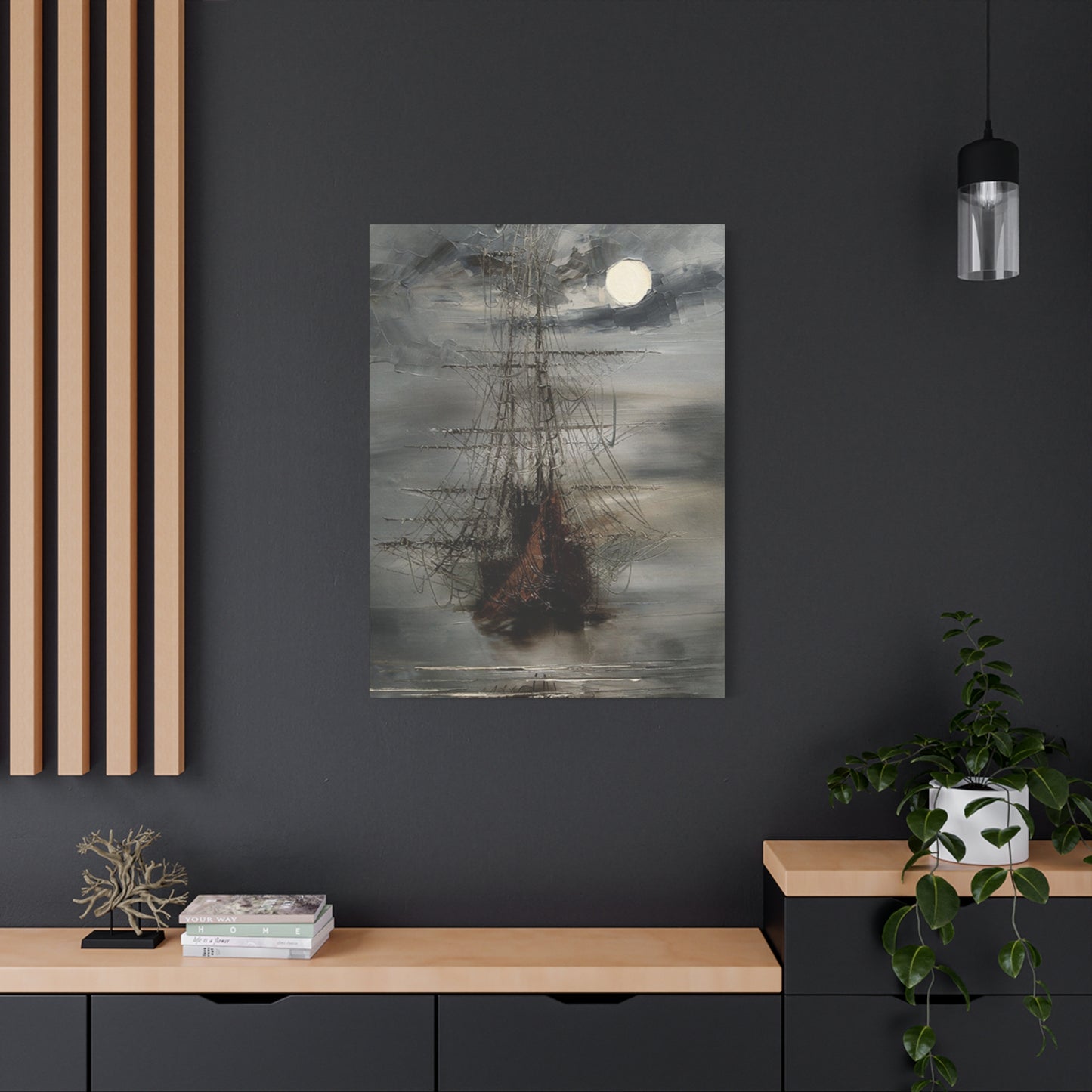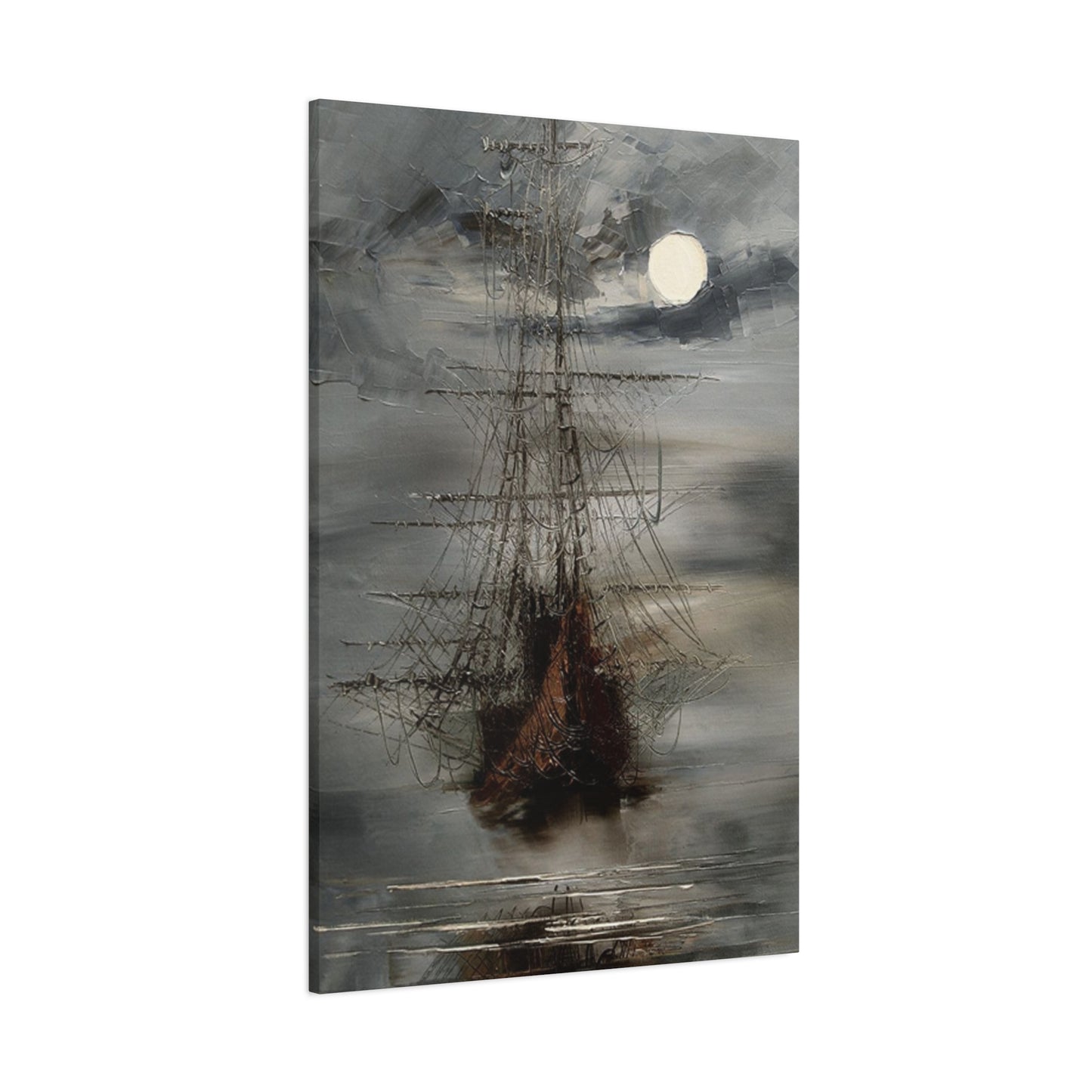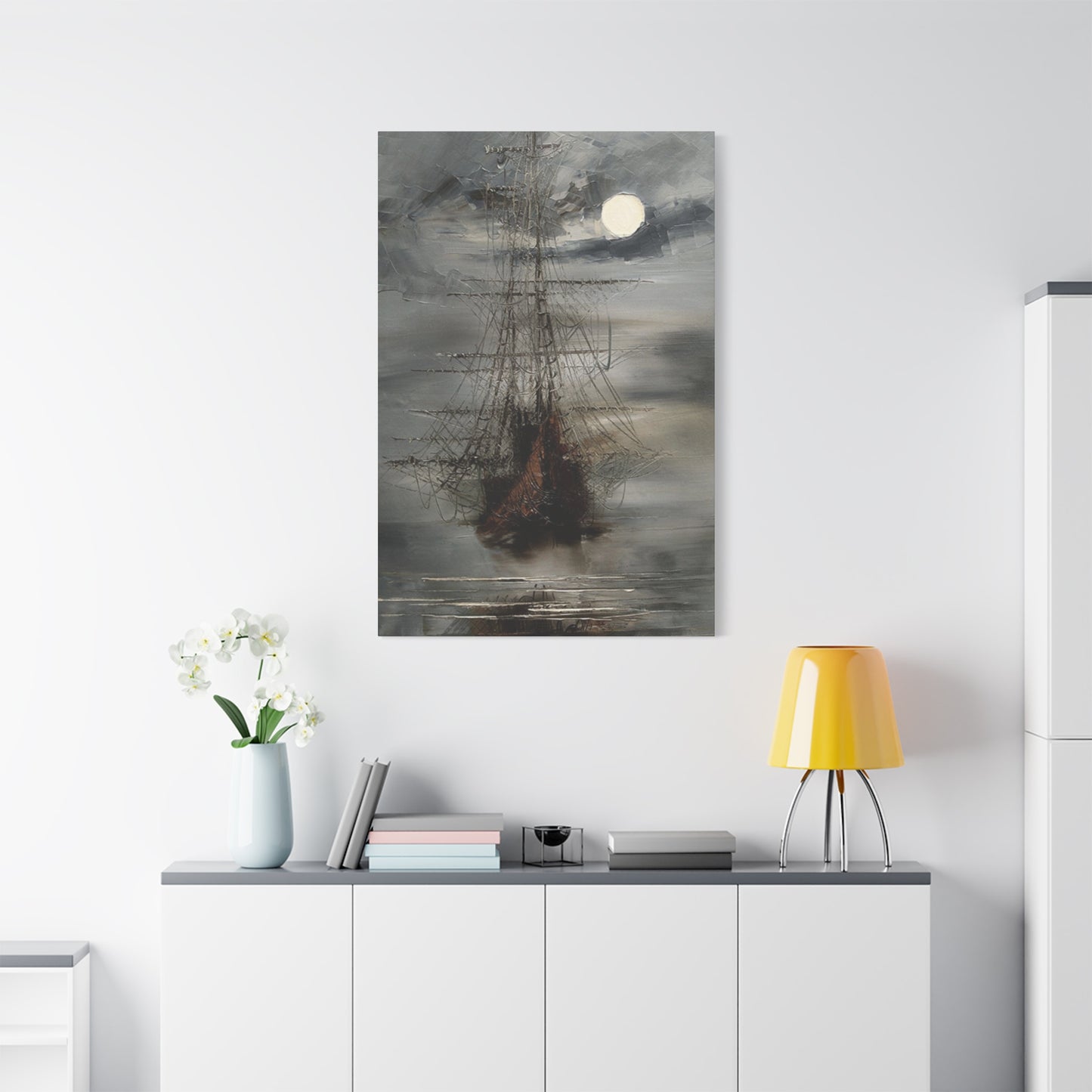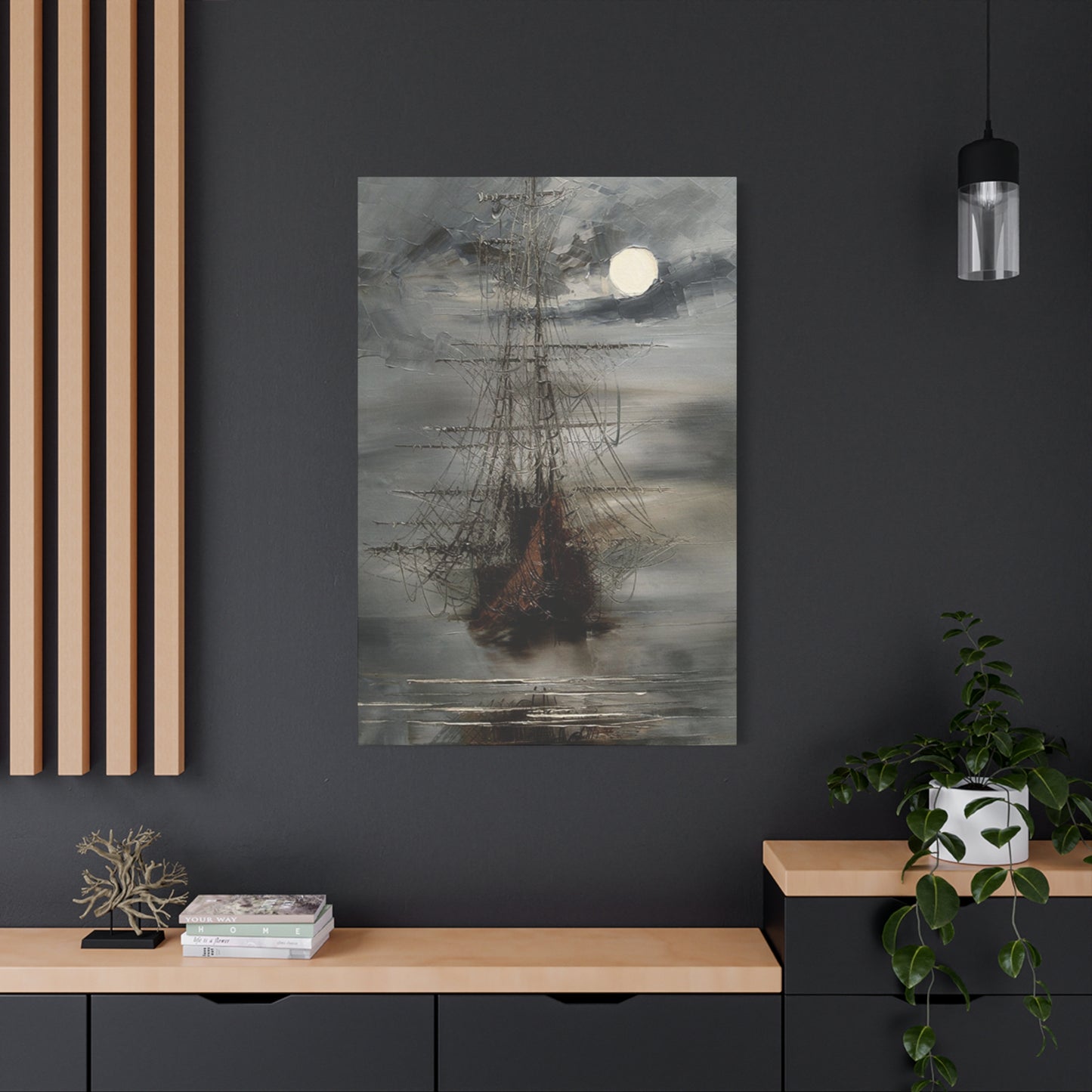Transform Offices and Creative Spaces with Vintage Ship Sailing Wall Art for Inspiration
The allure of maritime artwork has captivated homeowners, collectors, and design enthusiasts for generations. There exists something profoundly moving about the sight of majestic vessels cutting through oceanic waters, their sails billowing against dramatic skies. These visual narratives transport viewers to bygone eras when seafaring adventures defined human courage and curiosity. Whether you seek to infuse your living space with nautical elegance or wish to celebrate the rich legacy of maritime exploration, incorporating these timeless pieces into your interior design creates an atmosphere of sophistication and wanderlust.
The Enchantment of Maritime Vessel Artwork from Bygone Eras
Maritime vessel artwork from historical periods possesses an extraordinary ability to evoke powerful emotions and transport observers to distant times and places. These artistic representations capture more than mere vessels; they embody the human spirit of exploration, the pursuit of unknown horizons, and the eternal dance between humanity and nature's most formidable element. Each brushstroke tells stories of sailors who navigated treacherous waters, merchants who connected distant civilizations, and adventurers who dared to venture beyond familiar shores.
The emotional resonance of these artworks stems from their representation of freedom and possibility. When gazing upon a beautifully rendered vessel with unfurled sails catching invisible winds, viewers experience a vicarious sense of liberation from terrestrial constraints. The vessels become metaphors for personal journeys, dreams yet to be realized, and the courage required to embark upon life's uncertain passages. This symbolic depth transforms these pieces from simple decorative elements into meaningful artistic statements that reflect the aspirations and philosophical inclinations of those who display them.
Historical maritime paintings often showcase meticulous attention to detail, revealing the artist's deep understanding of naval architecture, weather patterns, and the play of light upon water surfaces. The rigging systems, the precise angle of the sails, the vessel's relationship to the surrounding elements all demonstrate a commitment to accuracy that honors the maritime tradition. This authenticity lends these artworks credibility and depth, making them valuable not only as aesthetic objects but also as historical documents that preserve maritime heritage for future generations.
The color palettes employed in these works typically feature rich, earthy tones that have aged gracefully over time or been intentionally rendered to evoke antiquity. Deep blues transition into stormy grays, warm sepia tones suggest aged parchment, and touches of crimson in flags or sunset skies provide dramatic focal points. These chromatic choices create visual harmony with various interior design schemes while maintaining the artwork's distinctive character and period authenticity.
Beyond their visual appeal, these maritime artworks serve as conversation pieces that invite storytelling and reflection. Guests inevitably find themselves drawn to these images, sparking discussions about maritime history, personal travel experiences, or philosophical musings about life's journey. This interactive quality makes them particularly valuable in social spaces where meaningful connection and engagement are desired.
Embodying Maritime Spirit Through Historical Vessel Imagery
Historical vessel imagery captures the essence of seafaring culture in ways that resonate across generations and cultural boundaries. These artistic representations preserve the spirit of an era when maritime travel represented the primary means of long-distance transportation, international commerce, and cultural exchange. The vessels depicted in these works were the lifelines of civilization, connecting continents and facilitating the flow of goods, ideas, and human ambition across vast oceanic expanses.
The artistic interpretation of maritime subjects requires a unique combination of technical skill and emotional sensitivity. Artists who specialize in this genre must understand not only the physical construction of historical vessels but also the atmospheric conditions that define maritime environments. They must capture the translucency of ocean spray, the weight of storm clouds, the luminosity of dawn breaking over calm waters, and the dramatic interplay between light and shadow on canvas sails. This mastery of technique allows them to create images that feel authentic and alive, as though frozen moments from actual voyages.
Maritime paintings from historical periods often depicted specific vessel types that were common during particular eras. Tall ships with multiple masts and complex rigging systems dominated the age of sail, representing the pinnacle of nautical engineering before the advent of steam power. Merchant vessels, naval warships, exploration crafts, and fishing boats each possessed distinctive characteristics that informed their artistic representation. Understanding these differences adds depth to one's appreciation of the artwork and provides insight into the historical context surrounding each piece.
The emotional atmosphere conveyed through these paintings varies dramatically based on the artist's intent and the scene depicted. Some works emphasize tranquility and beauty, showing vessels gliding peacefully across mirror-like waters under benevolent skies. These serene compositions evoke contemplation and inner peace, making them ideal for spaces dedicated to relaxation and meditation. Other pieces embrace drama and conflict, portraying vessels battling mountainous waves during violent storms, their crews locked in desperate struggles against nature's fury. These dynamic compositions generate excitement and respect for maritime courage, serving as powerful reminders of human resilience.
The compositional techniques employed in maritime artwork often follow classical principles that guide the viewer's eye through the scene. The vessel typically serves as the primary focal point, positioned according to the rule of thirds or other compositional guidelines that create visual balance. Secondary elements such as distant coastlines, other vessels, marine wildlife, or human figures add narrative depth and contextual information. The horizon line placement affects the emotional tone, with low horizons emphasizing expansive skies and high horizons focusing attention on the ocean's power and mystery.
Lighting conditions in maritime paintings carry significant symbolic and emotional weight. Golden hour illumination bathes scenes in warm, nostalgic light that emphasizes beauty and romance. Stormy, dramatic lighting creates tension and highlights the perilous nature of seafaring. Moonlit scenes evoke mystery and contemplation, while dawn and dusk settings suggest transitions, new beginnings, or journeys' ends. These lighting choices work in concert with other artistic elements to create cohesive emotional experiences for viewers.
Incorporating Historical Maritime Imagery into Interior Design
Incorporating historical maritime imagery into interior spaces requires thoughtful consideration of multiple factors including room function, existing design elements, color schemes, and the emotional atmosphere you wish to create. These artworks possess strong character and visual presence, making them capable of transforming spaces when integrated with intentionality and care. The key to successful incorporation lies in understanding how these pieces interact with surrounding elements and serve the overall design vision.
The scale of the artwork relative to the wall space and surrounding furniture plays a crucial role in achieving visual balance. Larger pieces make bold statements and work well as focal points above substantial furniture pieces such as sofas, consoles, or beds. These commanding works draw the eye immediately upon entering a room and set the tone for the entire space. Medium-sized pieces offer versatility, working well in groupings or as standalone elements in smaller rooms. Multiple smaller works can be arranged in gallery-style configurations that create visual interest through repetition and variation while maintaining thematic coherence.
Color coordination between the artwork and existing room elements ensures visual harmony without sacrificing the piece's distinctive character. The predominant colors in maritime paintings typically include various shades of blue, from deep navy to soft sky blue, along with neutral tones such as cream, beige, gray, and brown. These colors coordinate beautifully with coastal design schemes but also complement more diverse interior styles. Identifying accent colors within the painting and echoing them through decorative accessories, textiles, or smaller design elements creates subtle connections that unify the space.
The relationship between maritime artwork and furniture style deserves careful attention. These historical pieces naturally complement traditional and transitional furniture designs that feature classic lines, quality craftsmanship, and substantial presence. Dark wood furniture with visible grain patterns creates particularly striking pairings, as the organic textures and warm tones echo the natural elements depicted in maritime scenes. However, maritime artwork also creates intriguing contrasts when paired with contemporary furniture, offering visual tension that adds depth and interest to modern interiors.
Lighting design significantly impacts how maritime artwork is perceived and appreciated. Natural light from windows can illuminate these pieces beautifully during daytime hours, but artificial lighting extends viewing pleasure into evening hours and ensures the artwork receives appropriate emphasis. Picture lights mounted above or below frames provide focused illumination that highlights details and creates dramatic shadow play. Track lighting or adjustable spotlights offer flexibility in directing light precisely where needed. Ambient room lighting should be sufficient to prevent excessive contrast between the illuminated artwork and surrounding darkness, which can cause eye strain and diminish viewing comfort.
The frame selection for maritime canvas prints influences both the artwork's visual impact and its integration with surrounding design elements. Traditional wooden frames in dark finishes such as espresso, mahogany, or black create sophisticated presentations that honor the artwork's historical character. Lighter wood tones or painted frames in white, cream, or gray offer more casual, coastal aesthetics that work well in relaxed, beach-inspired interiors. The frame profile depth, ornamental details, and finish quality all contribute to the overall presentation and should be selected to enhance rather than overpower the artwork itself.
Maritime Elegance for Residences Near Water
Residences situated near coastal areas, lakefronts, or rivers possess inherent connections to maritime culture that make historical vessel artwork particularly appropriate and meaningful. These homes already embrace water-inspired design elements, and incorporating maritime paintings reinforces and celebrates this relationship while adding historical depth and artistic sophistication. The visual dialogue between the artwork's depicted scenes and the actual water views visible through windows creates a layered experience that enriches both elements.
Coastal homes often feature design palettes inspired by natural beach environments, including sandy neutrals, oceanic blues, weathered grays, and crisp whites. Maritime artwork integrates seamlessly into these color schemes while adding visual weight and historical gravitas that prevents coastal decor from feeling too light or insubstantial. The darker tones typically present in historical maritime paintings provide necessary contrast and anchor lighter surrounding elements, creating balanced compositions that feel both airy and grounded.
The architectural characteristics common in coastal homes often include exposed wooden beams, shiplap walls, wide-plank flooring, and large windows designed to maximize water views. These structural elements create ideal backdrops for maritime artwork, as the natural materials and nautical architectural references establish contextual relationships that make the artwork feel organically integrated rather than arbitrarily placed. The texture variations between smooth canvas surfaces, wooden frames, and surrounding architectural elements add tactile interest that enhances the overall sensory experience of the space.
Outdoor living spaces in coastal homes, including covered porches, screened patios, and enclosed sunrooms, offer additional opportunities for displaying maritime artwork when proper protective measures are implemented. Canvas prints treated with UV-resistant coatings and moisture barriers can withstand the increased humidity and temperature fluctuations common in these transitional spaces. These outdoor displays extend the home's aesthetic vision beyond interior walls and create cohesive visual experiences as residents and guests move between indoor and outdoor areas.
The lifestyle associated with coastal living often emphasizes relaxation, appreciation of natural beauty, and connection to maritime traditions. Historical vessel artwork reinforces these values by celebrating the cultural heritage of seafaring communities and the enduring human relationship with oceanic environments. For residents who engage in recreational boating, fishing, or other water activities, these artworks serve as visual affirmations of their lifestyle choices and passions, creating personal resonance that transforms houses into homes.
Seasonal variations in coastal environments can be reflected and complemented through strategic artwork selection and rotation. Stormy, dramatic maritime scenes resonate particularly well during winter months when actual ocean conditions become more turbulent and indoor time increases. Calmer, sunlit scenes celebrate the peaceful beauty of summer seasons when outdoor activities dominate. This seasonal rotation keeps interior spaces feeling fresh and responsive to changing environmental conditions while maintaining thematic consistency.
Historical Context of Maritime Vessel Paintings
Maritime vessel paintings emerged as a distinct artistic genre during periods when seafaring activities dominated economic, military, and exploratory endeavors. These artworks served multiple purposes beyond aesthetic appreciation, functioning as historical records, propaganda tools, celebration of naval victories, documentation of vessel designs, and expressions of national maritime pride. Understanding this historical context enriches appreciation for these works and reveals layers of meaning that might otherwise remain hidden.
The golden age of maritime painting coincided with the expansion of European naval powers during the seventeenth through nineteenth centuries. Dutch, British, French, and Spanish artists created countless works depicting their nations' vessels engaged in various activities from peaceful commerce to violent naval battles. These paintings reflected national identities and ambitions, with each seafaring nation developing distinctive artistic styles and preferences. Dutch maritime paintings often emphasized technical accuracy and atmospheric effects, British works frequently celebrated naval victories and maritime supremacy, while Spanish and French pieces reflected their unique cultural perspectives on seafaring traditions.
Portrait paintings of specific vessels served purposes similar to individual human portraits, documenting important ships for posterity and celebrating their achievements. Ship owners, naval commanders, and merchant companies commissioned these works to commemorate significant vessels in their fleets. These portrait paintings required precise attention to detail, accurately depicting rigging configurations, hull designs, sail arrangements, and identifying features such as flags, figureheads, and decorative elements. This documentary function makes historical maritime paintings valuable resources for researchers studying naval architecture and maritime history.
Battle scenes represented another important category within maritime painting, depicting naval engagements that shaped political boundaries and national destinies. These dramatic compositions captured moments of intense action, showing vessels exchanging cannon fire amid smoke and chaos. Artists faced significant challenges in rendering these complex scenes, balancing historical accuracy with dramatic impact while managing numerous compositional elements competing for viewer attention. The most successful battle paintings achieved clarity despite complexity, guiding viewers through the action while maintaining overall compositional coherence.
Maritime paintings also documented the evolution of vessel technology over centuries. Early works depicted simple sail configurations and basic hull designs, while later paintings showed increasingly sophisticated vessels with complex rigging systems, improved hull shapes, and enhanced navigational capabilities. This visual record traces humanity's technological advancement and growing mastery over maritime challenges. Comparing paintings from different eras reveals the rapid pace of innovation that characterized maritime development and the dramatic transformations that occurred in vessel design and capability.
The economic importance of maritime trade inspired numerous paintings depicting merchant vessels engaged in commercial activities. These works celebrated the prosperity enabled by international commerce and the vessels that facilitated global trade networks. They often included secondary elements such as harbor scenes, loading operations, or distant coastlines representing trading destinations. These commercial maritime paintings reflected optimistic visions of economic expansion and the wealth generated through maritime enterprise.
Social and cultural dimensions of maritime life also found expression in historical paintings. Works depicting everyday shipboard activities, sailors at work, vessel construction, and harbor life provided glimpses into the human experiences underlying maritime operations. These genre scenes humanized seafaring activities and reminded viewers that impressive vessels and romantic voyages depended on the labor, skill, and sacrifice of ordinary individuals. This human dimension adds emotional resonance and helps contemporary viewers connect with maritime heritage on personal levels.
Historical Vessels as Representations of Discovery and Independence
Historical sailing vessels carry profound symbolic meanings that transcend their practical functions as transportation mechanisms. These magnificent structures represent fundamental human aspirations including the desire for freedom, the courage to explore unknown territories, the pursuit of knowledge, and the determination to overcome obstacles. This symbolic richness makes maritime vessel imagery particularly powerful and explains why these subjects continue to resonate with contemporary audiences despite dramatic changes in transportation technology.
The concept of adventure lies at the heart of maritime symbolism. Vessels venturing across vast oceans embody the human willingness to leave familiar shores and embrace uncertainty in pursuit of discovery and growth. This adventurous spirit speaks to essential aspects of human nature, reminding viewers of their own potential for courage and transformation. In personal terms, maritime imagery can symbolize individual life journeys, with the vessel representing the self, the ocean symbolizing life's challenges and opportunities, and the voyage representing personal development and self-discovery.
Freedom represents another central theme in maritime symbolism. The sight of vessels with full sails catching wind and cutting through open waters evokes visceral feelings of liberation from terrestrial constraints. The ocean's vastness represents unlimited possibility, while the vessel provides the means to navigate and survive within that limitless space. For individuals feeling constrained by circumstances or seeking greater autonomy, maritime imagery offers visual metaphors for the freedom they desire. This symbolic association explains why maritime artwork appeals particularly to people experiencing life transitions or seeking inspiration to pursue new directions.
The relationship between human agency and natural forces explored in maritime imagery provides rich material for philosophical reflection. Sailors cannot control wind or waves but must work skillfully with these forces to achieve their objectives. This dynamic represents the human condition broadly, acknowledging both our limitations and our ability to adapt and persevere. Maritime artwork depicting vessels successfully navigating challenging conditions becomes visual affirmation of human resilience and resourcefulness, offering encouragement during difficult periods.
Historical connections between maritime vessels and exploration of unknown territories add additional symbolic dimensions. The great age of exploration saw European vessels carrying adventurers to previously unknown lands, expanding human knowledge and transforming civilizations worldwide. While this history includes troubling aspects related to colonization and exploitation, the fundamental human drive to explore and understand our world remains admirable. Maritime artwork celebrating exploration can acknowledge this complexity while honoring the courage and curiosity that motivated seafarers to venture into the unknown.
The concept of journey as metaphor for life finds powerful expression in maritime imagery. Every voyage has a beginning and destination, encounters obstacles and favorable conditions, requires preparation and adaptation, and ultimately transforms those who undertake it. These parallels between maritime journeys and human life experiences make vessel artwork deeply meaningful on personal levels. Viewers can project their own life narratives onto the depicted scenes, finding encouragement, validation, or inspiration in the visual metaphors presented.
Maritime vessels also symbolize human ingenuity and technological achievement. The complex engineering required to design and build vessels capable of surviving ocean conditions represents remarkable problem-solving and innovation. The evolution of vessel design over centuries demonstrates humanity's capacity for incremental improvement and adaptation. Maritime artwork celebrating these magnificent constructions honors human creativity and the collaborative efforts of countless individuals who contributed to maritime advancement.
Blending Traditional and Historical Maritime Artwork for Distinctive Interior Aesthetics
Blending traditional rustic design elements with historical maritime artwork creates visually rich interiors that feel both grounded and sophisticated. This design approach combines the warm, organic qualities of rustic materials with the refined elegance of maritime paintings, resulting in spaces that feel comfortable yet cultured. The key to successful implementation lies in finding balance between these complementary but distinct aesthetic vocabularies, ensuring neither overwhelms the other while allowing each to enhance the overall effect.
Rustic design elements typically emphasize natural materials, visible textures, handcrafted qualities, and connections to traditional craftsmanship. Reclaimed wood furniture, exposed stone surfaces, wrought iron fixtures, and woven textiles create the foundation for rustic interiors. These elements bring warmth, tactile interest, and organic irregularity that humanize spaces and create welcoming atmospheres. When combined with maritime artwork, these rustic elements provide grounding that prevents the refined paintings from feeling too formal or disconnected from everyday life.
The color relationships between rustic elements and maritime artwork require thoughtful consideration. Rustic interiors often feature earth tones including various browns, warm grays, creams, and muted greens. Maritime paintings typically incorporate oceanic blues, stormy grays, and neutral tones. These palettes share neutral territories including grays, creams, and browns, providing common ground that facilitates integration. Strategic use of blue accent colors in rustic spaces through textiles, ceramics, or accessories creates visual bridges that connect maritime artwork to surrounding elements.
Textural contrasts between smooth canvas surfaces and rough rustic materials add visual interest and dimensional depth to spaces. The refined finish of maritime paintings provides sophisticated counterpoints to weathered wood grains, rough stone surfaces, and coarse woven textiles. These contrasts create dynamic visual experiences that engage viewers and reward closer inspection. The interplay between refined and raw, smooth and textured, polished and weathered generates aesthetic tension that enlivens interiors and prevents monotony.
Scale and proportion considerations become particularly important when combining rustic furniture with maritime artwork. Rustic pieces often feature substantial construction and generous proportions that reflect their traditional craftsmanship origins. Maritime artwork must possess sufficient visual weight to hold its own against these robust furniture pieces without appearing overwhelmed. Larger canvas prints or multiple pieces arranged in gallery configurations create the necessary presence to balance substantial rustic furniture effectively.
The historical authenticity inherent in both rustic design and maritime artwork creates natural affinities between these aesthetic approaches. Both celebrate traditional craftsmanship, honor historical practices, and express respect for the past. This shared sensibility makes their combination feel organic rather than forced. Rustic furniture and maritime paintings both tell stories about human relationships with natural environments, traditional skills, and enduring values, creating thematic coherence that unifies diverse visual elements.
Lighting design plays crucial roles in successfully integrating maritime artwork into rustic spaces. Rustic interiors often feature warm lighting that enhances wood tones and creates cozy atmospheres. Maritime paintings benefit from focused lighting that highlights their details and colors. Combining ambient warm lighting with directional accent lighting achieves both objectives, creating overall warmth while ensuring artwork receives appropriate emphasis. Fixtures with rustic character such as wrought iron, aged bronze, or weathered wood coordinate with surrounding design elements while providing necessary illumination.
Dramatic Ocean Conditions in Historical Maritime Imagery
Dramatic depictions of turbulent ocean conditions represent some of the most compelling and emotionally powerful examples within the maritime painting genre. These works capture moments of extreme challenge when vessels and crews faced nature's full fury, testing human courage, skill, and determination against overwhelming forces. The artistic rendering of stormy conditions requires exceptional technical ability to convey motion, power, atmosphere, and drama while maintaining compositional coherence and emotional impact.
The visual representation of violent ocean conditions involves mastering numerous complex artistic challenges. Artists must depict water in constant turbulent motion, with waves rising to tremendous heights, crashing against vessel hulls, and creating spray and foam. These dynamic water surfaces reflect constantly changing light conditions as storm clouds create dramatic shadow patterns and occasional breaks in cloud cover allow shafts of illumination to pierce through darkness. The technical difficulty of rendering these complex, simultaneous phenomena separates masterful maritime artists from merely competent practitioners.
Color palettes in stormy maritime paintings typically emphasize dramatic contrasts between dark, threatening elements and areas of illumination or hope. Deep grays, slate blues, and near-blacks dominate compositions, creating ominous atmospheres that communicate danger and uncertainty. Strategic placement of lighter tones including whites, pale grays, and occasionally warm colors in breaking clouds creates focal points and prevents compositions from becoming uniformly dark and unreadable. These lighting choices generate visual hierarchies that guide viewer attention through complex scenes.
The depiction of vessels struggling against storm conditions adds human drama and narrative tension to these works. Sailors working frantically to control sails, vessels listing at extreme angles, rigging straining against wind forces, and waves breaking over decks all communicate the desperate struggle for survival. These human elements transform abstract natural phenomena into relatable stories about courage and resilience. Viewers empathize with the depicted sailors and experience vicarious emotional responses to the depicted dangers.
Compositional strategies in stormy maritime paintings must balance chaos and order, creating scenes that feel authentically turbulent while remaining visually comprehensible. Artists typically establish clear focal points, often the vessel itself or a particularly dramatic wave, around which other elements are organized. Diagonal lines suggesting motion and instability dominate these compositions, creating dynamic energy. The strategic placement of horizontal and vertical elements provides necessary stability that prevents compositions from feeling completely chaotic and disorienting.
The symbolic dimensions of stormy maritime paintings extend beyond literal depictions of weather conditions. These works can represent life's challenges, periods of personal struggle, the testing of character through adversity, and the uncertainty inherent in human existence. For viewers facing difficult circumstances, these images offer visual metaphors that validate their experiences and provide inspiration through examples of courage and perseverance. The eventual survival implied by the painting's existence becomes a message of hope, suggesting that storms eventually pass and vessels reach calmer waters.
The atmospheric effects achieved in stormy maritime paintings demonstrate advanced understanding of meteorological phenomena and light behavior. Artists must render the unique quality of storm light, the obscuring effects of rain or sea spray, the way foam and spindrift catch light, and the color shifts that occur under heavy cloud cover. These atmospheric subtleties transform simple vessel-and-wave compositions into immersive sensory experiences that transport viewers into depicted scenes, creating emotional engagement that elevates these works beyond mere technical exercises.
Maritime Artwork for Professional Workspace Environments
Maritime artwork offers excellent options for professional workspace environments including offices, conference rooms, reception areas, and executive suites. These settings require artwork that projects professionalism while creating welcoming atmospheres that facilitate productivity and positive interactions. Historical vessel imagery provides ideal solutions, combining visual sophistication with symbolic meanings that align well with professional values including journey, progress, navigation, and strategic thinking.
The symbolic associations between maritime imagery and business concepts create natural affinities that make these artworks particularly appropriate for professional settings. Nautical metaphors pervade business language, with terms like navigating challenges, charting courses, staying afloat, and reaching destinations all drawing from maritime vocabulary. Vessel artwork reinforces these metaphorical connections, creating visual reminders of strategic thinking, careful planning, adaptability, and perseverance. These associations make maritime paintings more than decorative elements, transforming them into visual affirmations of professional values and aspirations.
The visual sophistication of well-executed maritime paintings establishes appropriate tone for professional environments. These works demonstrate cultural appreciation, historical awareness, and aesthetic discernment, qualities that reflect positively on organizations and individuals. The traditional subject matter and classical artistic approaches convey stability, experience, and respect for established practices, all desirable associations in professional contexts. Meanwhile, the artworks' visual interest and narrative content prevent professional spaces from feeling sterile or unwelcoming.
Color considerations for maritime artwork in professional settings tend toward sophisticated, subdued palettes that coordinate with typical office design schemes. Blues work particularly well, as this color conveys trustworthiness, professionalism, and calm focus. Neutral tones including grays, tans, and creams integrate easily with corporate color schemes while maintaining the artwork's distinctive character. Dramatic stormy scenes with darker palettes can create powerful impressions in executive offices or conference rooms where their intensity reinforces messages about meeting challenges with determination.
Scale and placement decisions for maritime artwork in professional settings must account for viewing distances, room functions, and traffic patterns. Reception areas benefit from substantial pieces that create immediate positive impressions on entering visitors. Conference rooms can accommodate larger works that provide visual interest without causing distraction during meetings. Individual offices allow for more personal selections that reflect occupant preferences while maintaining professional appropriateness. Hallways and circulation spaces offer opportunities for gallery-style arrangements that showcase multiple related pieces and create visual continuity throughout professional environments.
The durability and maintenance requirements of canvas prints make them practical choices for professional settings. Unlike original paintings requiring careful climate control and conservation, modern canvas reproductions withstand typical office conditions without special care. Their resistance to fading when properly treated with UV protection ensures long-term color stability, protecting the investment in office aesthetics. This practical dimension complements their visual and symbolic qualities, making maritime canvas prints sensible choices for busy professional environments.
Client-facing professional spaces particularly benefit from maritime artwork's conversation-starting potential. These pieces provide natural topics for discussion during initial meetings or while waiting, easing social interactions and creating more comfortable atmospheres. The narratives implied by maritime scenes invite sharing of personal stories about travel, adventure, or maritime experiences, facilitating relationship building. This social lubricant function adds practical value beyond purely aesthetic contributions, justifying artwork investment through enhanced client relationships and more positive professional interactions.
Exploring Historical Periods Through Maritime Canvas Imagery
Maritime canvas imagery provides windows into historical periods when seafaring activities shaped civilizations and defined human possibilities. These artworks capture specific moments in time, preserving visual records of vessel designs, maritime practices, technological capabilities, and cultural attitudes toward oceanic environments. Exploring these historical dimensions adds intellectual depth to aesthetic appreciation, transforming decorative objects into educational resources that connect viewers with human heritage and maritime traditions.
Different historical periods developed distinctive vessel types reflecting contemporary technological capabilities and functional requirements. Ancient civilizations created galleys powered by oars and simple sails, enabling early maritime trade and warfare around Mediterranean and Asian waters. Medieval cogs and carracks expanded cargo capacities and sailing ranges, facilitating growing international commerce. The age of exploration brought purpose-built vessels capable of transoceanic voyages, including caravels, galleons, and East Indiamen. The golden age of sail reached its pinnacle with magnificent clipper ships, engineered for speed and elegance. Each vessel type tells stories about the eras that created them, reflecting technological knowledge, economic priorities, and cultural values.
The evolution of sail configurations and rigging systems visible in maritime paintings documents humanity's gradual mastery of wind power. Early vessels featured simple single-mast arrangements with basic square sails. Later developments introduced multiple masts, various sail shapes including triangular lateen sails for improved windward performance, and complex rigging systems allowing precise sail control. The most advanced tall ships featured dozens of sails across multiple masts, requiring large skilled crews and representing pinnacles of pre-industrial engineering. Examining these details in maritime paintings provides insight into maritime technological progress and the ingenuity of historical shipbuilders and sailors.
Naval warfare history finds extensive documentation in maritime battle paintings depicting conflicts that determined political boundaries and shaped civilizations. Famous engagements including Trafalgar, the Armada battles, and numerous lesser-known conflicts received artistic commemoration that preserved their memory for posterity. These battle scenes reveal tactical approaches, vessel capabilities, and the human cost of maritime conflict. While celebrating martial prowess, they also remind viewers of warfare's brutality and the courage required of those who fought at sea where retreat or escape was impossible.
Commercial maritime activities including merchant shipping, whaling, fishing, and passenger services appear frequently in historical paintings, documenting economic activities that sustained societies and enabled prosperity. These commercial scenes often include harbors, loading operations, trading activities, and the daily routines of maritime workers. They provide glimpses into economic systems, trade networks, and the practical realities underlying romantic notions of seafaring. This commercial dimension grounds maritime heritage in everyday human activities and reminds viewers that magnificent vessels existed primarily to serve practical economic purposes.
Social history and cultural practices find expression in maritime paintings through depictions of shipboard life, sailors' activities, maritime celebrations, and the interaction between seafaring communities and broader society. These genre scenes humanize maritime history by focusing on individual experiences rather than grand narratives. They show sailors at work and leisure, families awaiting vessels' return, maritime communities gathered at harbors, and the cultural practices unique to seafaring societies. These intimate glimpses connect contemporary viewers with historical individuals whose lives centered on maritime activities.
Geographical exploration documented in maritime paintings traces humanity's gradual mapping of the globe and encounters with diverse environments and cultures. Vessels approaching unknown coastlines, navigating through ice fields, rounding notorious capes, and anchoring in exotic harbors appear throughout maritime art history. These exploration scenes capture moments of discovery that expanded human knowledge and initiated cultural exchanges with profound consequences. While acknowledging the problematic aspects of colonial expansion, these artworks commemorate human curiosity and the courage required to venture into unmapped territories.
Maritime Artwork's Synergy with Wooden Interior Elements
Maritime artwork achieves particularly harmonious integration with wooden interior elements, creating spaces that feel cohesive, warm, and thoughtfully designed. The natural affinity between maritime subjects and wood materials stems from their shared connections to traditional craftsmanship, organic materials, and maritime heritage. Historical sailing vessels were constructed primarily from wood, making the material intrinsically linked to maritime culture. This fundamental connection facilitates the creation of interiors where maritime artwork and wooden elements reinforce and enhance each other.
The color relationships between maritime paintings and wood tones create natural visual harmonies. Most wood species display warm brown tones ranging from light honey and golden oak to rich walnut and deep mahogany. These warm colors complement the neutral tones frequently appearing in maritime paintings including tans, creams, and warm grays while providing pleasing contrasts to cooler blues and grays representing water and sky. The organic color variations within natural wood grain create visual interest that prevents interiors from feeling monotonous while maintaining overall color harmony.
Textural relationships between smooth canvas surfaces and wood grain patterns generate visual interest through subtle contrasts. Maritime paintings typically present relatively smooth, uniform surfaces that allow depicted imagery to read clearly. Wood surfaces display distinctive grain patterns, knots, and textural variations that add organic character. When combined, these different surface qualities create dimensional depth and tactile interest that reward closer inspection. The interplay between refined artistic surfaces and natural material textures creates balanced visual experiences that engage multiple senses.
The historical authenticity shared by maritime artwork and traditional wood furniture creates thematic coherence. Both celebrate craftsmanship traditions, natural materials, and designs evolved over centuries to achieve functional excellence and aesthetic beauty. This shared values system makes their combination feel appropriate and intentional rather than arbitrary. Spaces incorporating both elements project respect for traditional skills, appreciation for quality materials, and connections to cultural heritage.
Architectural wood elements including exposed beams, paneling, wainscoting, and timber frames provide ideal backdrops for maritime artwork. These structural elements create visual weight and textural richness that can support substantial artwork without appearing unbalanced. The linear qualities of beams and paneling create implicit frames or boundaries that help organize wall spaces and establish logical locations for artwork placement. Maritime paintings displayed against wood architectural elements benefit from the organic backdrop that enhances rather than competes with the artwork itself.
Wood flooring creates foundational elements that ground maritime artwork and establish overall room character. Wide-plank floors in darker stains provide dramatic bases that anchor lighter wall colors and maritime artwork. Lighter wood floors create brighter, more casual atmospheres that work well with calmer maritime scenes and coastal design schemes. The horizontal lines created by wood flooring provide visual stability that balances the vertical emphasis of walls and hanging artwork, contributing to overall compositional harmony.
Wood frames for maritime canvas prints create seamless transitions between artwork and surrounding wood elements. Matching frame wood species and finishes to furniture or architectural elements generates visual continuity that unifies diverse design components. Contrasting frame selections can provide intentional visual separation when desired, allowing artwork to stand apart from backgrounds while still maintaining material consistency. Frame selection represents an important design decision that significantly impacts how maritime artwork relates to surrounding wooden elements.
Handcrafted Maritime Canvas Reproductions
Handcrafted maritime canvas reproductions occupy a special category within decorative artwork, combining the accessibility of reproduction prints with the unique character imparted by manual creation processes. These pieces bridge the gap between unaffordable original paintings and mass-produced prints, offering quality, individuality, and artistic value at intermediate price points. Understanding what distinguishes handcrafted reproductions from other options helps consumers make informed decisions aligned with their aesthetic preferences and budget considerations.
The creation process for handcrafted reproductions typically involves skilled artists manually applying paint to canvas surfaces, working from high-quality images of original maritime paintings. Unlike purely mechanical printing processes, these hand-painted reproductions incorporate individual artistic interpretation, visible brushstrokes, paint texture, and subtle variations that make each piece unique. The artists executing these works must possess significant technical ability to faithfully recreate original compositions while contributing their own hand to the final product. This human element distinguishes handcrafted reproductions from digital prints and adds value through genuine artistic labor.
The textural qualities achieved through hand-painting create three-dimensional surface variations that engage light in dynamic ways. Paint layers build up in areas of emphasis, creating subtle relief that catches light and generates shadows. Brushstroke patterns remain visible, contributing visual interest and testifying to the manual creation process. These textural elements create viewing experiences more similar to original paintings than flat printed reproductions, justifying premium pricing and appealing to buyers seeking greater artistic authenticity.
Color rendering in handcrafted reproductions benefits from artists' ability to mix and adjust pigments during creation. Unlike mechanical printing limited to predetermined color profiles, hand-painting allows continuous adjustment to achieve desired color relationships and atmospheric effects. Skilled reproduction artists understand color theory and can make subtle modifications that enhance overall compositions while remaining faithful to original artworks. This color flexibility enables handcrafted reproductions to achieve vibrancy and depth challenging for mechanical processes to match.
The investment value of handcrafted reproductions falls between mass-produced prints and original artworks. While lacking the provenance and rarity driving original artwork prices, handcrafted pieces possess individual character and genuine artistic labor that justify higher prices than purely mechanical reproductions. For buyers seeking quality maritime artwork without original painting budgets, handcrafted reproductions offer optimal value propositions, delivering aesthetic satisfaction and uniqueness at accessible price points.
Quality assessment for handcrafted maritime reproductions requires examining several factors. Canvas quality affects durability and appearance, with heavy-weight, properly prepared surfaces providing better foundations than thin, poorly primed alternatives. Paint quality impacts color permanence and finish character, with artist-grade materials offering superior longevity compared to student-grade alternatives.
Conclusion
Vintage ship sailing wall art brings a unique blend of history, elegance, and inspiration into offices and creative spaces. Depicting majestic vessels navigating open waters, these artworks capture the spirit of adventure, perseverance, and exploration. By incorporating sailing-themed prints or canvases into work environments, you not only enhance aesthetic appeal but also create a motivating atmosphere that encourages productivity, creativity, and strategic thinking.
The charm of vintage nautical art lies in its ability to combine storytelling with visual sophistication. Each ship, sail, and wave tells a tale of journeys undertaken, challenges overcome, and destinations reached. Displaying these pieces in offices or studios can foster a sense of ambition and resilience, reminding individuals and teams of the rewards of focus, determination, and careful navigation—both in work and in life. The artistry inherent in vintage ship prints adds character, depth, and elegance, transforming plain walls into sources of daily inspiration.
From a design perspective, vintage ship wall art is versatile and adaptable. Large-scale canvases serve as striking focal points in conference rooms, reception areas, or creative studios, while smaller prints can be arranged as curated gallery walls that reflect themes of exploration, vision, and innovation. The muted, classic color palettes often used in vintage nautical art—deep blues, earthy browns, and antique neutrals—integrate seamlessly with modern, industrial, or traditional office interiors, providing timeless elegance without overwhelming the space.
Beyond visual impact, these artworks carry symbolic significance that resonates in professional and creative environments. Ships navigating open seas represent progress, adaptability, and goal-oriented movement. Hanging vintage ship art in a workspace can subtly encourage strategic thinking, resilience under pressure, and innovative problem-solving. It inspires a mindset of journey and growth, reminding individuals to embrace challenges as opportunities and to chart their course with confidence and creativity.
Moreover, the artistic detail in vintage ship sailing prints enhances both aesthetic and intellectual engagement. Skilled rendering of rigging, sails, and maritime landscapes draws viewers in, inviting contemplation and reflection. These elements help cultivate a focused yet imaginative environment, where employees, artists, or entrepreneurs can feel motivated and inspired by the subtle interplay of history, beauty, and symbolism.
Ultimately, vintage ship sailing wall art elevates offices and creative spaces by merging elegance, inspiration, and meaningful storytelling. It transforms walls into visual narratives of exploration and achievement, creating an environment that nurtures both productivity and creativity. Whether used as a bold centerpiece or as part of a cohesive gallery, these artworks provide motivation, sophistication, and a connection to timeless maritime heritage.

















